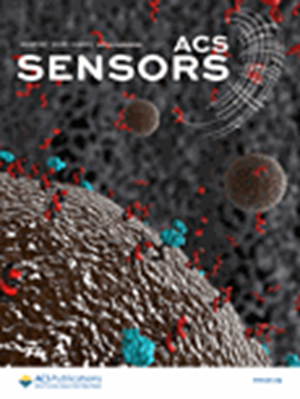Next-Gen Point-of-Care Tool for Ultra-Sensitive Detection of Urinary Spermine for Prostate Cancer Diagnosis
IF 8.2
1区 化学
Q1 CHEMISTRY, ANALYTICAL
引用次数: 0
Abstract
Prostate cancer (PCa), the second most common cancer in men, demands effective early detection strategies. Elevated spermine levels in the prostate tissue contrast with decreased urinary concentrations in PCa patients. Here, we present a novel sensing platform combining differential pulse voltammetry and an extended gate field-effect transistor (EGFET) with a molecularly imprinted polymer|molecular imprinting (MIP) nanofilm for selective and sensitive spermine detection. Key advancements include successfully constructing and characterizing a pseudoreference electrode and a precisely engineered analyte binding interface. The Ag/AgCl pseudoreference electrode exhibited high reliability and reproducibility, optimized to enhance conductivity and minimize interference noises. Electrochemical analysis confirmed successful MIP modification, creating a precise 3D-imprinted binding interface. The platform accurately quantified spermine in artificial urine across concentrations from 0.1 to 1000 ng/mL, achieving a detection limit of 1.23 ng/mL. High selectivity was demonstrated against competing polyamines such as spermidine and histamine. Analysis of electrical properties indicated that spermine binding induced changes in surface potential, altering the metal-oxide-semiconductor field-effect transistor threshold voltage and validating the system’s sensitivity. The system’s superior performance was confirmed with a high imprinting factor (IF ≈ 4.1) and sensitivity 10 times higher compared to nonimprinted polymers. Hill–Langmuir analysis confirmed a strong binding affinity to spermine. Clinical validation using human urine samples from PCa diagnostic evaluations demonstrated high consistency with liquid chromatography mass spectrometry, exhibiting an excellent linear correlation (R2 = 0.97) without statistically significant differences (p-value <0.0001). This study introduces a robust, miniaturized, and cost-effective EGFET-based sensor for spermine detection, offering substantial potential for clinical diagnostics and PCa biomarker monitoring.

求助全文
约1分钟内获得全文
求助全文
来源期刊

ACS Sensors
Chemical Engineering-Bioengineering
CiteScore
14.50
自引率
3.40%
发文量
372
期刊介绍:
ACS Sensors is a peer-reviewed research journal that focuses on the dissemination of new and original knowledge in the field of sensor science, particularly those that selectively sense chemical or biological species or processes. The journal covers a broad range of topics, including but not limited to biosensors, chemical sensors, gas sensors, intracellular sensors, single molecule sensors, cell chips, and microfluidic devices. It aims to publish articles that address conceptual advances in sensing technology applicable to various types of analytes or application papers that report on the use of existing sensing concepts in new ways or for new analytes.
 求助内容:
求助内容: 应助结果提醒方式:
应助结果提醒方式:


